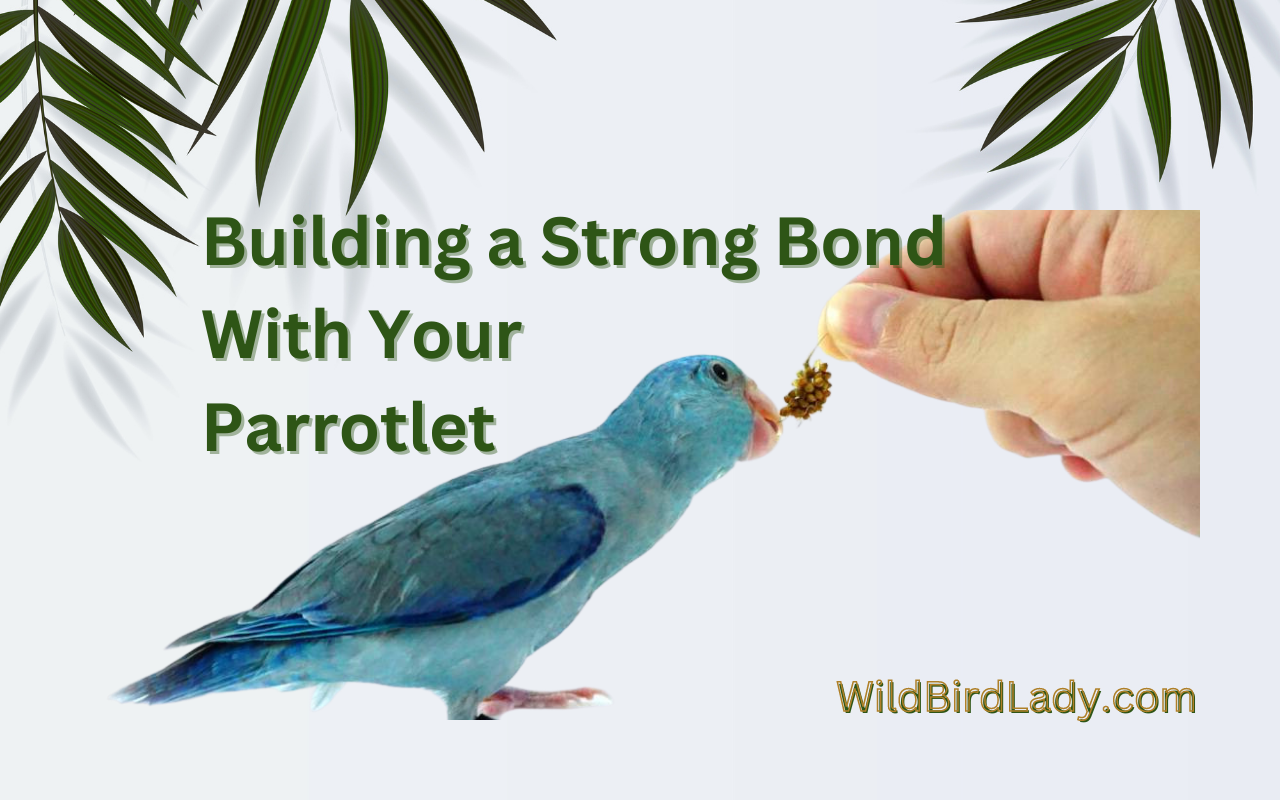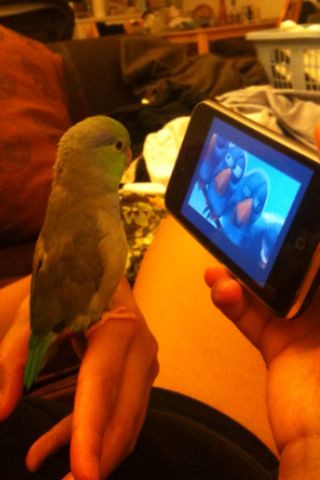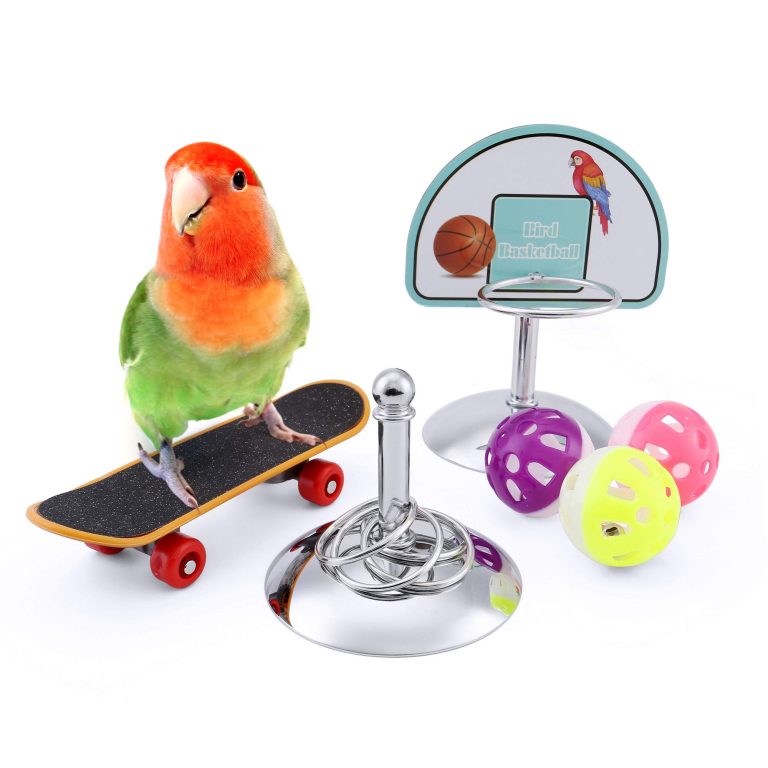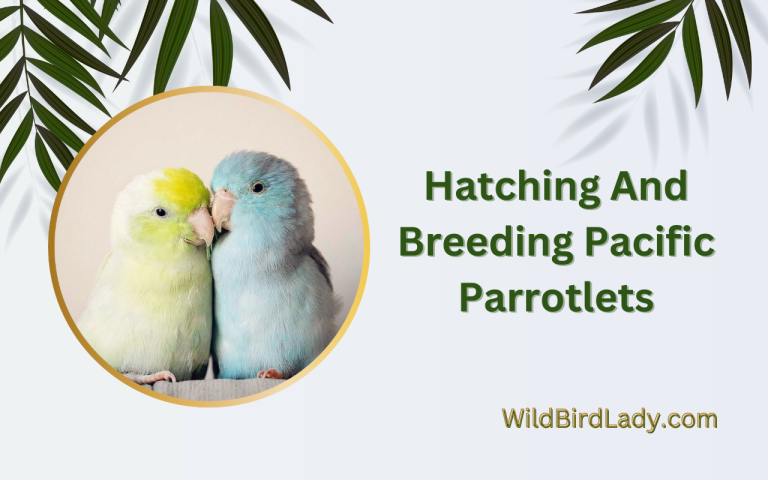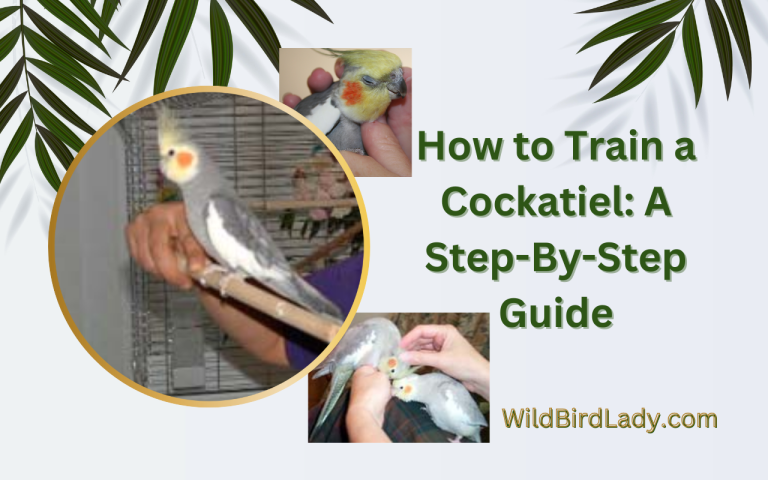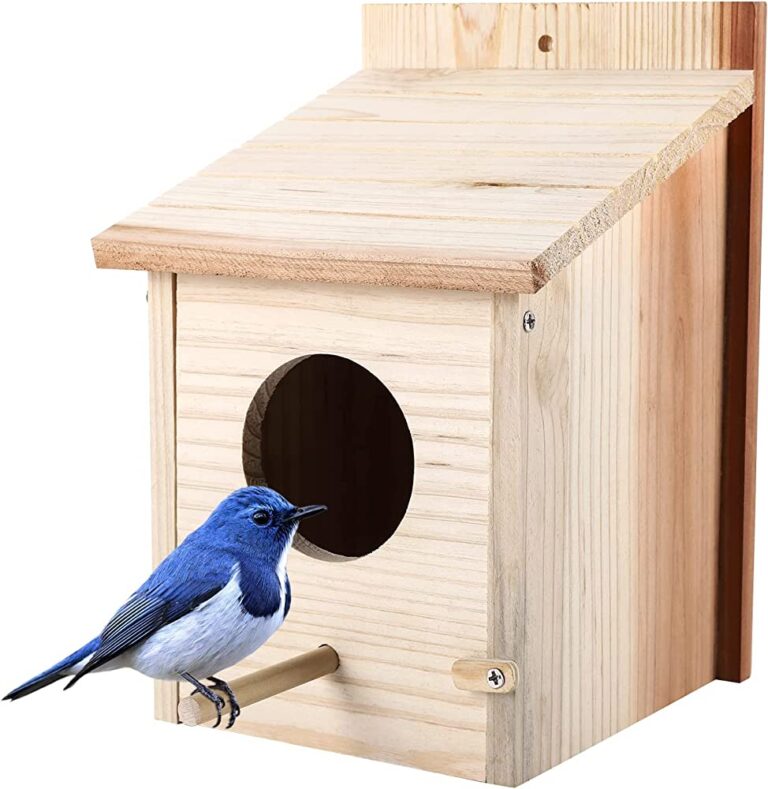How to Bond with Your Parrotlet: 7 Trust-Building Tips That Really Work
As pet owners, we all want to build a strong relationship with our pets and parrotlets are no exception. These tiny birds are known for their big personalities and loving nature, making them popular pets among bird enthusiasts. To build a strong bond with your parrotlet, you need to understand their behavior and cater to their needs.
Parrotlets thrive on attention and affection, so spending quality time with them is crucial. Creating a daily routine, talking to them, offering them food by hand, and engaging them in play can help to strengthen your bond. In this article, we will explore the most effective ways to build a strong bond with your parrotlet and ensure that you both enjoy a happy and healthy relationship.

Understanding Your Parrotlet’s Behavior
Building A Strong Bond With Your Parrotlet
Parrotlets are some of the most intelligent and adorable birds, and they make great pets. When you open your home to a parrotlet, you’re not just welcoming a pet, but a family member. These birds have such loving and unique personalities and with a bit of understanding, you can build a strong bond with your feathered friend.
Different Personality Traits And Characteristics Of Parrotlets
Like humans, parrotlets have various personalities. Understanding your parrotlet’s behavior is essential to know how to interact with them. Here are some personality traits and characteristics of parrotlets:
- Curious and playful – parrotlets are very curious creatures and love to play. Provide your parrotlet with various toys to keep them engaged and entertained.
- Shy or aggressive – parrotlets can be shy around strangers or aggressive when they feel threatened. Give them time to warm up to new people, and don’t force them to interact.
- Social – parrotlets enjoy spending time with their human family members. Try to spend at least an hour a day with your feathered friend to build a strong bond.
- Vocal – parrotlets are known for their high-pitched chirping, and some may even learn to talk if trained.
Body Language And Vocalizations For Communication
Understanding your parrotlet’s body language and vocalizations is critical for effective communication. Here are some essential body language and vocalizations to watch out for:
- Fluffed feathers – fluffed feathers generally indicate that your parrotlet is relaxed and comfortable.
- Head bobbing – if your parrotlet is head bobbing, it means that they’re either playful or trying to intimidate you.
- Dilated pupils – dilated pupils indicate that your parrotlet is excited or scared.
- Chirping and screaming – parrotlets chirp when they’re happy and content, and they scream when they’re angry or scared.
Creating A Comfortable Environment For Your Parrotlet
Creating a comfortable environment for your parrotlet is a crucial step in building a strong bond with them. Here are some tips to keep in mind when creating a comfortable environment for your parrotlet:
- Cage size – a spacious cage is essential for your parrotlet to fly around and stay healthy. Make sure the cage is large enough for them to stretch their wings freely.
- Proper diet – parrotlets require a well-balanced diet consisting of fruits, vegetables, and pellets.
- Clean living space – regularly clean your parrotlet’s cage and food and water bowls to create a hygienic living space.
- Toys and perches – provide your parrotlet with various toys and perches to keep them entertained and mentally stimulated.
By understanding your parrotlet’s behavior and communicating well with them, you’ll be able to build a strong bond with your feathered friend. Remember to provide them with a comfortable environment and give them lots of love and attention. With consistent effort, you’ll have a happy and healthy parrotlet.
The Importance Of Trust
Building A Strong Bond With Your Parrotlet
There are many reasons why people choose to have parrotlets as pets. They are intelligent, playful, and affectionate birds that can make delightful companions. However, building a strong bond with a parrotlet takes effort and patience. One important aspect of establishing a positive relationship with your pet parrotlet is trust.
Here, we’ll discuss the importance of building trust and how to achieve it.
Building Trust Through Consistent Care, Attention, And Positive Reinforcement.
Trust is the foundation of any strong relationship. The same is true for the bond between a parrotlet and its owner. To build trust with your parrotlet, you need to establish a consistent routine of care and attention. Here are some key points to keep in mind:
- Spend time with your parrotlet every day, interacting with it in a positive way and showing it affection.
- Consistently provide food, water, and a clean living environment for your parrotlet.
- Use positive reinforcement techniques such as offering treats, praise, and rewards when your parrotlet behaves well.
- Avoid negative reinforcement or punishment techniques as these can damage the trust between you and your parrotlet.
Consistent care and attention, combined with positive reinforcement, can help build a strong foundation of trust between you and your parrotlet.
Establishing A Routine And Creating A Sense Of Security For Your Parrotlet.
Parrotlets thrive on routine and predictability. By establishing a consistent daily routine, you can create a sense of security for your pet parrotlet. Here are some tips:
- Feed your parrotlet at the same time every day.
- Provide toys and perches in the same locations to create a sense of familiarity.
- Keep the environment around your parrotlet calm and quiet to avoid unnecessary stress.
- Ensure that your parrotlet’s living environment is consistent and well-maintained.
By establishing a routine, you can help your parrotlet feel secure in its environment. A sense of security can contribute to building trust between you and your pet bird.
Avoiding Negative Reinforcement And Punishment Techniques.
Negative reinforcement techniques are not only ineffective but they can also break the trust between you and your parrotlet. Punishing your pet bird for bad behavior can instill a sense of fear and anxiety. Here are some tips to avoid negative reinforcement:
- Use positive reinforcement to reward good behavior and ignore bad behavior instead of punishing.
- Do not yell at or hit your parrotlet as this can instill a sense of fear and harm the trust between you and your pet bird.
- Set boundaries by redirecting your parrotlet’s attention to acceptable behaviors when it engages in bad behavior.
Building a strong bond with your parrotlet through trust requires consistent care, attention, positive reinforcement, and avoiding negative reinforcement techniques. Establishing a routine and creating a sense of security can also contribute to building trust over time. Remember to be patient, consistent, and gentle with your pet parrotlet and you can form a deep and lasting bond with your feathered friend.
Training Your Parrotlet
Building A Strong Bond With Your Parrotlet
Parrotlets are intelligent, social birds that need a great deal of attention, love, and care to thrive. Training your parrotlet is one of the best ways to build a strong bond with your feathered friend, as it creates a shared understanding between the two of you.
Here are some effective tips on training your parrotlet.
Positive Reinforcement Training Techniques, Including Clicker Training
Using positive reinforcement is an essential part of parrotlet training. Positive reinforcement involves rewarding and praising desired behaviors, and it is more effective than punishing undesired ones. Clicker training is a way to reinforce positive behaviors, where you use a clicker to signal to your parrotlet that it has done something right, and then immediately give it a reward.
Here are some tips on how to use clicker training to train your parrotlet effectively:
- Fill a container with small treats that your parrotlet loves
- Use a training clicker and pick a quiet training spot
- Click the clicker and give your parrotlet a treat
- Repeat this process until your parrotlet understands that the clicker signifies a reward
- Reward your parrotlet for good behavior and ignore unwanted behavior
- Gradually reduce dependence on food rewards by using verbal praise and physical touch
The Importance Of Consistency And Repetition In Training
Consistency and repetition are key factors in parrotlet training success. It would help if you had a predictable and consistent training routine and rewards that your parrotlet can learn to anticipate. Here are some tips for creating a consistent training routine with your parrotlet:
- Choose the same time every day for your training sessions
- Be consistent with the reward system and schedule
- Use the same verbal commands for each training task
- Repeat each task multiple times so your parrotlet can understand the behavior you want to encourage
Encouraging And Rewarding Desired Behaviors
When training your parrotlet, you want to focus on encouraging and reinforcing desired behaviors. This approach will help your parrotlet develop good habits and learn how to communicate effectively with you. Here are some ways to encourage and reward desired behaviors:
- Make training fun and rewarding for your parrotlet
- Use the right type of rewards that your parrotlet loves, such as treats, praise, or attention
- Be patient and consistent with your training approach, as training is a long-term process
- Avoid punishing unwanted behavior by using positive reinforcement
By using clicker training, being consistent with your training routine, and rewarding desired behaviors, you can build a strong bond with your parrotlet and communicate effectively with them. Always remember to listen to your parrotlet, understand its needs, and show love and compassion to establish a positive and long-lasting relationship with your feathered companion.
Bonding Activities
Building A Strong Bond With Your Parrotlet
Do you want to build a strong and lasting bond with your parrotlet? As a responsible parrotlet owner, bonding is essential for fostering a healthy relationship between you and your pet bird. Bonding can be achieved through different activities that your parrotlet enjoys.
In this blog post, we will focus on identifying enjoyable activities for you and your parrotlet. We will also touch on interactive playtime and games that enhance the bond. Lastly, we will cover activities that stimulate your parrotlet’s mind and exercise its body.
Identifying Enjoyable Activities For You And Your Parrotlet.
Parrotlets are social creatures that crave attention and affection. Bonding activities should consist of anything your parrotlet likes and participating with them makes the activity more enjoyable.
- Spend time with your parrotlet outside of its cage
- Share their favorite treats and foods with them
- Create a safe and comfortable environment for your pet bird
- Offer praise and encouragement for good behavior
- Mimic your parrotlet’s natural sounds and movements to establish trust and familiarity
Interactive Playtime And Games That Enhance The Bond.
Interactive playtime is an excellent way to bond with your parrotlet. Playtime can include games and activities that keep your pet bird mentally and physically stimulated.
- Use toys that require your parrotlet to use its brain, such as puzzle feeders and interactive toys
- Play hide-and-seek with your bird and its favorite toy
- Engage in games of catch and toss with soft, lightweight toys
- Teach your parrotlet words and phrases and reinforce the lessons with praise and rewards
- Behave enthusiastically and joyfully to encourage your pet’s interest
Activities That Stimulate Your Parrotlet’S Mind And Exercise Its Body.
Parrotlets require mental and physical exercise to maintain their health and happiness. Incorporating these types of activities into your daily routine can help bond with your parrotlet while also promoting overall wellbeing.
- Encourage your parrotlet to explore new surroundings and environments
- Set aside daily training sessions
- Take your pet bird for a flight and let it spread its wings
- Utilize perches and ladders to engage its muscles while also providing an opportunity to climb
- Play music, audio books or sounds that cater to your pet bird’s preferences.
These activities not only enable physical exercise but also emotionally engage your pet bird which is essential for bonding. Remember, bonding is a two-way process that entails building trust and sharing affection. With time, patience, and consistency, you can develop a strong and enjoyable bond with your parrotlet.
Frequently Asked Questions Of Building A Strong Bond With Your Parrotlet
How Do I Bond With My Parrotlet?
To build a strong bond with your parrotlet, you should spend time with them daily, talk to them in a soft and pleasant tone, offer them treats and toys, and provide them with a comfortable and safe environment.
How Do I Train My Parrotlet?
Training your parrotlet involves repetition, patience, and consistency. Start with basic commands like “step-up” and “step-down” and use positive reinforcement. Reward them with treats or praise when they obey.
How Do I Provide Mental Stimulation For My Parrotlet?
Parrotlets are intelligent birds that need mental stimulation. Offer them a variety of toys such as puzzle feeders and chew toys. Rotate their toys to keep them interested, provide perches of different sizes and textures, and create a stimulating environment.
What Should I Feed My Parrotlet?
A balanced diet for your parrotlet should include a variety of fresh fruits, vegetables, and high-quality pellets. Avoid feeding them avocado, chocolate, caffeine, and alcohol as these can be toxic.
How Often Should I Groom My Parrotlet?
Parrotlets need to groom themselves daily, but they also require occasional baths. Provide a shallow dish of water for them to bathe in or mist them with a spray bottle. Trim their nails and beaks as needed and provide regular veterinary care.
Conclusion
Your parrotlet might be a tiny bird, but its love and loyalty towards its owners are immense. Building a strong bond with your feathered friend requires patience, love, and dedication. Understanding their behavior, language, and needs are crucial in nurturing a happy and fulfilling relationship.
To build trust, it’s essential to respect their space and create a positive environment. Be consistent in your interactions and provide them with a healthy diet and a comfortable living space. The rewards of a robust bond with your parrotlet are countless, from playful interactions to a comforting presence in your life.
By following these simple yet effective tips, you can establish a strong bond with your parrotlet that will last a lifetime. The love and companionship of a well-cared-for bird will certainly enrich not just your life but theirs as well.
So go ahead and start building that beautiful relationship with your feathered friend today!

